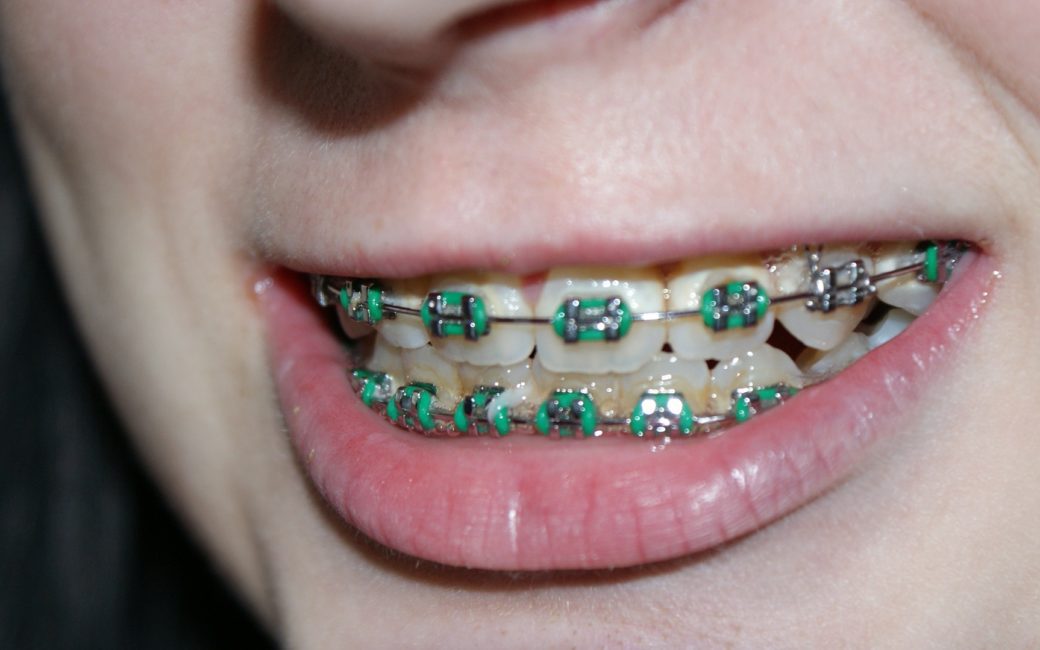So, your classmates were making fun of you since first period, whispering among themselves while stealing mischievous glances at you.
“Metal mouth! Train tracks!” They called you names, but you shrugged them off. Besides, in 18 months to two years, you will get rid of the “train tracks” and have a straight, healthy set of teeth.
You had dental braces to correct your crooked teeth. Your crooked teeth made you self-conscious. They put stress on your teeth, jaws, and muscles. Moreover, they increase your susceptibility to cavities and gum disease.
Your dentist kept advising you to undergo orthodontic treatment. He let you know all about orthodontics and your options. You chose to get the traditional dental braces. Dental professionals recommend these types of braces for patients with certain dental conditions. These conditions include crossbite, buck teeth, crowding, open bite, spacing, misplaced midline, underbite, and jaw joint disorders.
And so, the procedure commenced.
Your dentist prepped your teeth for the treatment. He treated your cavity-infected teeth. He then proceeded to clean the tooth surface. In addition, he extracted an extra tooth to open more room for the adjustment. Your dentist gave your teeth a quick scrub and tooth etching to prepare the natural enamel of the tooth for the application of an adhesive.
After rinsing, an adhesive is applied to the teeth where the braces will be placed. The brackets were then positioned. The glue setting, cementing of molar bands, and the installation of wires followed. Your dentist then gave you reminders. He advised you to brush, floss, and rinse with mouthwash. He also told you to watch what you eat and drink. Moreover, he reminded you to come back for your appointments and other do’s and don’ts.
After Braces Installation, White Spots Appeared
After six months, your classmates’ teasing ceased, but another problem arose. You noticed something white on your teeth, which does not disappear after brushing.
You visited your dentist who told you that the white spots are white spot lesions.
What Are White Spot Lesions?
The lesions appeared due to the decalcification of the enamel. The braces and bonding materials promote the retention of dental plaque and cause decay and periodontal disease.
The development of WSLs usually appears in the fourth week to six months of the treatment. Often, the development aggravates due to inadequate oral hygiene. After your dentist installed your orthodontic appliance, a significant change occurs in the bacterial flora of the dental plaque. The dental plaque will now have higher concentrations of acidogenic bacteria. Bacteria present might include Streptococcus mutans and Lactobacilli. These bacteria will then cause the subsequent demineralization of the enamel.
Aside from the microbial factors, salivary factors, oral hygiene, diet, and the alteration of the oral environment also contributes to the development of WSLs.
The changing environment due to the insertion of fixed orthodontic appliances produces new stagnation areas. This then encourages the colonization of S. mutans and Lactobacilli. This colonization is intensified by the presence of carbohydrates and reduced saliva access.
How to Prevent White Spot Lesions
With an adequate flow of saliva, you can prevent enamel demineralization. Saliva helps in the cleansing of carbohydrates from the surfaces of the teeth. Good oral hygiene is also essential as dental braces can make teeth cleaning difficult. This leads to the accumulation of food debris.
Patients under fixed orthodontic appliances must also be watchful of their food consumption. Too much and frequent intake of carbohydrates may expose the enamel to overlapping episodes of acid without intervening repair. This later results in the loss of minerals.
The good thing is that white spot lesions can be managed by preventing the demineralization of the enamel and the biofilm formation. Proper oral hygiene control, use of fluoride products, and other ways of boosting the anti-cariogenic properties of fluoride.
It is also important to use fluoride-containing products when it comes to toothpaste and mouthwash. Remembering to maintain a proper toothbrushing, mouthwash-rinsing, and flossing schedule is just as critical.
If flossing using the traditional string floss is difficult, alternative methods include Waterpik, flossing sticks, electric flosser, Airfloss, and interdental brushes.
Can Adhesives Help Solve The Dental Issue?
Recently, researchers in London, Spain, and Brazil developed adhesive materials that seek to prevent white stains on the teeth of people with dental braces.
In the study, researchers compared three new types of experimental adhesives. The adhesives contain bactericidal and enamel remineralization properties through the bioactive nano-mineral halloysite whose nanotubes loaded with triclosan. The researchers used concentrations of triclosan in five, ten, and 20 percent.
It was found that in the 24 hours following the use of the materials, only the 20-percent concentration maintained its property after 72 hours. On the one hand, the remineralizing effect of the three materials lasted for two weeks.
Through the new finding, the development of adhesives, which could help prevent the demineralization of the enamel while on dental braces and remineralize the area, will be beneficial in preventing the appearance of white spot lesions.

